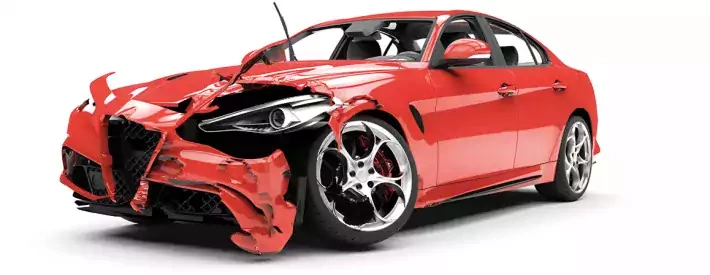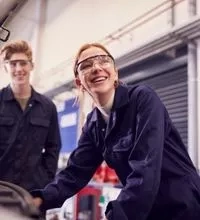Seven ways to stop you being a crash repair dummy

In this article: As vehicles become more complicated, repairing them after accidents will keep getting trickier. Thatcham Research’s top technical brain, Richard Billyeald, gives us the lowdown
Cars as we know them are changing fast. Manufacturers and legislators alike are pushing for huge reductions in CO2, NOx and particulate emissions, while also aiming to improve safety for vehicle occupants and other road users.
Both are laudable goals. However, manufacturers’ solutions to these problems invariably make vehicles more complex. For example, the sensor and computer systems required to operate advanced driver-assistance systems (ADAS) – including autonomous emergency braking, blind-spot monitors and cruise control – add a layer of technology that was almost totally absent from cars a decade ago.
Likewise, passive crash-safety features require new and more complex structures, which can add weight. Manufacturers are therefore turning to advanced and exotic materials to compensate. Even powertrains are becoming more complex, ranging from highly developed combustion engines to battery-powered EVs and hybrid systems combining the two.
All these additional facets have an enormous effect on accident repair specialists, particularly those in independent garages. So what do repair technicians need to know? Richard Billyeald, Chief Technical Officer at Thatcham Research, takes us inside the problem and gives his seven top tips.
1. Get over yourself
Adapting to new technologies is nothing… well, new. Even old technologies such as electrically adjustable door mirrors and heated windscreens brought increased repair costs when they first appeared.
“There is an element of inevitability to this,” Thatcham’s Billyeald says. “The more technology is applied to cars, the more complex it all becomes, and the more parts required. That’s always going to have an effect on insurance claims costs – especially in the early days of that technology.”
2. Pobody’s nerfect (so don’t worry about work drying up)
ADAS systems may reduce the number of crashes, but accident repair isn’t going away any time soon. Human error will continue to be a factor on the roads.
“The increased use of sensors for ADAS technologies, and how we’ve seen them go from parking sensors and cameras to active safety systems, offers fantastic support for drivers and is really helpful in raising the lowest common denominator in terms of driver skill,” Billyeald explains. “Although the technologies reduce the number of crashes, accidents do still happen.”
3. Figure out what you’re looking at
Given the whole range of different sensors and technologies that could be installed on vehicles coming in for repair, what should technicians be doing? Thatcham’s approach is effectively a three-stage feedback loop, starting with the proper identification of the vehicle.
“One Volkswagen Golf looks very much like another, but one might have no ADAS system and another could have every box ticked. As a repairer, how do you know what’s fitted to that vehicle and what to do with it when you’ve identified it?” Billyeald asks.
4. Learn more
Once you’ve established what you’re handling, you’ll need to draw upon some knowledge of the model and the specific technologies onboard. That points to the matter of guidance, where manufacturers advise the repair industry on what can and can’t be repaired, and how.
“What we want manufacturers to provide is the methods for fixing those systems,” Billyeald explains. “In what scenario do you need to replace a sensor and recalibrate the system? And remember, in many cases, vehicle manufacturers are mandating that those calibrations must be done with their bespoke equipment or specify that they use their network.”
5. Think about the knock-on problems
The complexity of these new technologies also adds extra time and cost to the repairs process. It’s something independent garages will need to bear in mind.
“Time is money in the claims industry,” Billyeald says. “As soon as something takes longer, it costs money. All of that time, the customer is without their car, potentially driving a courtesy car, which also costs money. There’s a financial impact for the repairer and the insurer, but inevitably the impact is also on the consumer.
“These things affect the efficiency of the insurance claims. If it’s not possible to identify that cost at the beginning of a claim, it can have a huge effect, and it’s more time the consumer is without their car.”
6. Look beyond the gadgets
It isn’t just about the sensor technologies behind the ADAS systems. The repair sector also has to be aware of the raw materials used in the construction of new vehicles.
“High-tensile, heat-treated steels – with one-piece structures and challenging joins and joining techniques – are a challenge,” Billyeald says. “At first glance, that car’s made of steel, but actually it’s not a steel you can section, or join easily, and it isn’t appropriate for repair. A lot of what we’re doing is helping repairers understand that and identify the high- and ultra-high-strength steels fitted to cars. In certain cases, they’re not repairable and repairs shouldn’t be attempted.”
7. The ball’s not always in your court
Manufacturers also need to make sure they’re designing cars with long-term repairs in mind.
“Repairability cannot be added in at the end,” Billyeald notes. “It’s got to be designed from the start. Manufacturers and suppliers really need to have repairability on their radar from the start when they’re designing these systems, and they need to think about systems for the whole life of the car. If it reduces the total cost of ownership of their vehicles, it will have an impact on their sales to consumers and fleets in particular.
“These technologies are great, and there are huge safety benefits there, but they need to be seen across the life of the vehicle, not just at the point it comes off the production line. Those safety benefits need to be sustained and maintained.”
This is an edited extract from IMI's new MotorPro magazine, received free as part of IMI membership. Find out more about becomianng a member of the most influential community in UK automotive.




